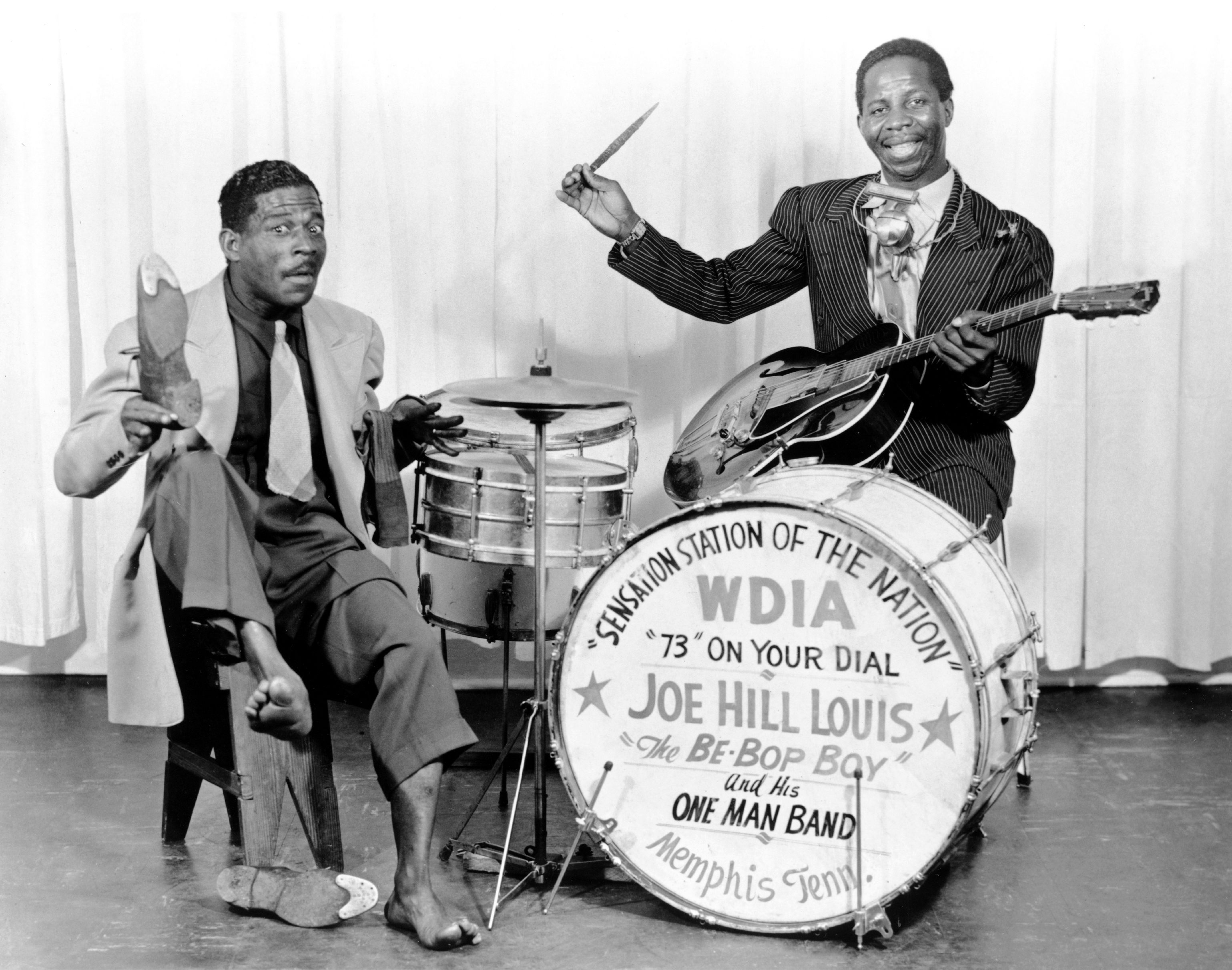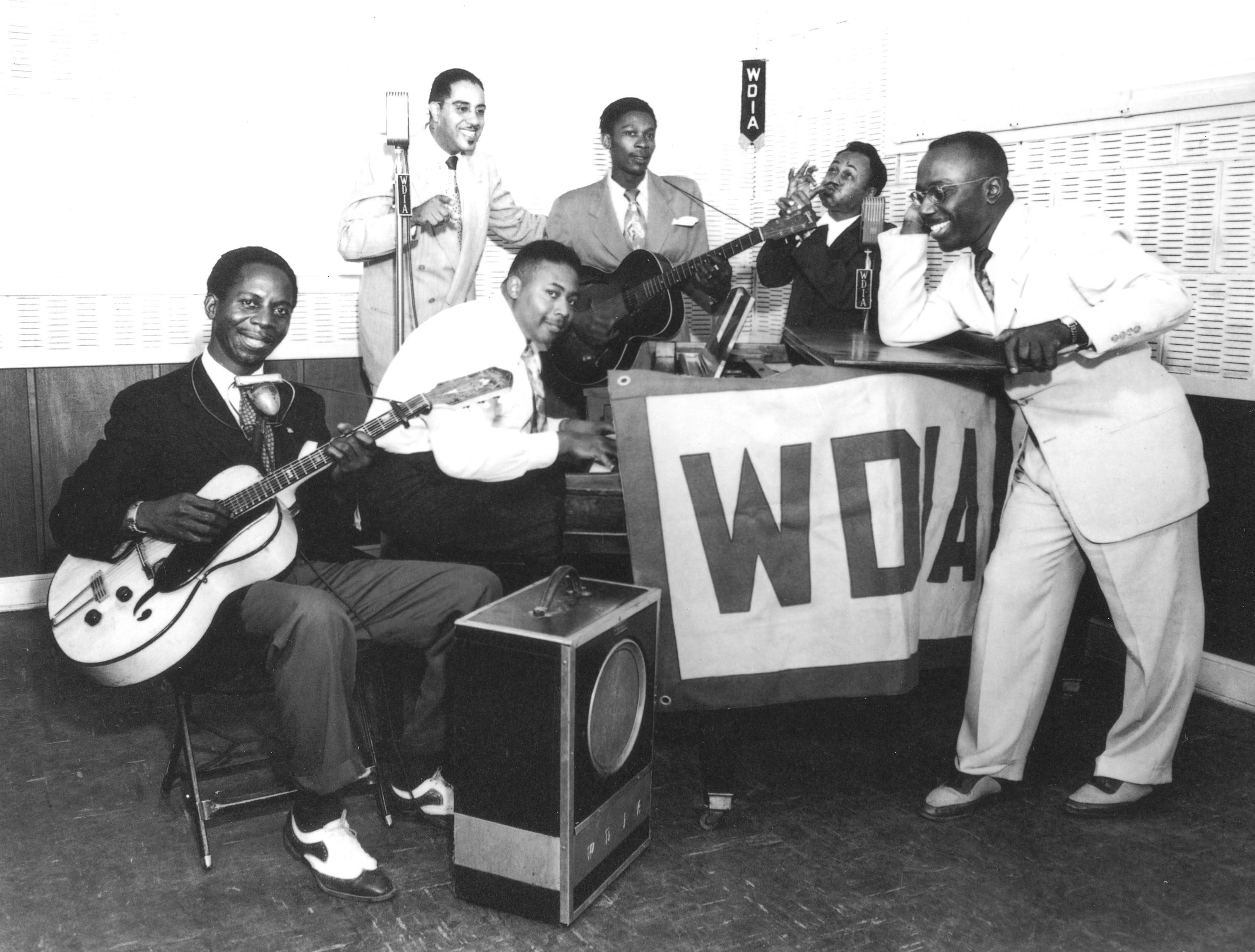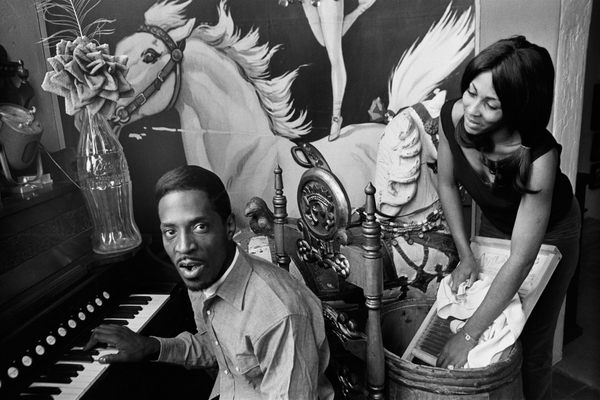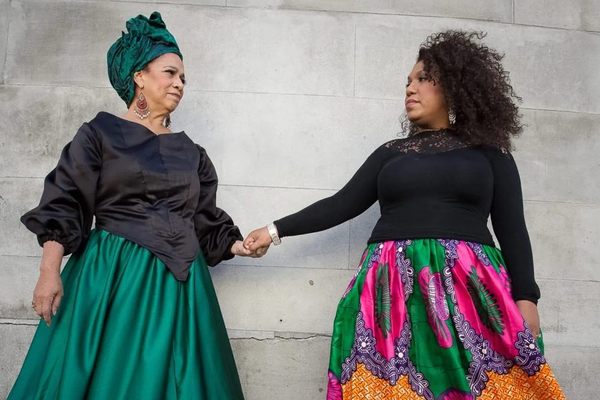How America Got Its First Black Radio Station
In 1948, Memphis channel WDIA became a community voice and a rock ‘n’ roll star-maker.

Although nearly 10 percent of the United States’s population was African-American following World War II, you wouldn’t know it by listening to the radio, the main form of entertainment at the time. White voices—almost exclusively male—dominated the airwaves. Even the actors portraying the African-American leads in the popular Amos and Andy radio program, Freeman Gosden and Charles Correll, were white.
White men owned the nation’s radio stations, too, and they programmed for white audiences. As a result, mainstream radio stations sounded very similar, which is why WDIA struggled to find an audience when it became Memphis’ sixth radio station in June 1947.
Like its competitors, WDIA initially featured white male radio personalities playing country and pop hits that appealed to white listeners, like “Smoke! Smoke! Smoke! (That Cigarette)” by Tex Williams and “Time After Time” by Frank Sinatra. Similarly, its news and commentary reflected the interests of white Memphians even though roughly 40 percent of the city’s population was African-American.
Facing bankruptcy in October 1948, WDIA’s white owners, Bert Ferguson and John R. Pepper, realized they had to take a risk if they wanted to save their station. Instead of focusing their entire programming on white listeners, they decided to introduce a half-hour show aimed at “a big segment of the population that had musical tastes and community needs that were not being answered,” according to Ferguson in a recorded interview 20 years later.

Tan Town Jubilee premiered that October with Nat D. Williams, an African-American syndicated columnist, high school teacher, and local talent show host, playing blues records from his own collection. Aside from a few initial bomb threats from whites, it was well received. In fact, so many African Americans tuned in to listen to “Nat D.” that WDIA rapidly rose to the number two spot in the market.
In an interview with the Memphis Rock ‘n’ Soul Museum, singer and WDIA personality Rufus Thomas likened the program’s debut to when Jackie Robinson broke the racial barrier to become the first African American to play in Major League Baseball. For the first time, what African Americans in Memphis heard on the radio, in that half hour, was a reflection of their community.
Toni Bell, who grew up listening to WDIA and worked at the station in the 1980s, says hearing Williams, Thomas, and other African-American personalities on the radio meant so much because no one on the air before spoke directly to their community or addressed the issues that concerned them.
“WDIA was the only place we could get someone black talking to us,” she says.

Realizing they had tapped into something, Ferguson and Pepper expanded the station’s African-American content. One new blues and R&B program in the line-up, Hoot and Holler, opened with Thomas saying, “I’m young and loose and full of juice. I got the goose, so what’s the use?” Within a year, WDIA had entirely converted to African-American programming and quickly became the number one station and the first to gross a million dollars annually in Memphis.
Bell explains it wasn’t just the music or even the personalities that made WDIA such a hit in Memphis and throughout the Mississippi Delta region when the station increased to 50,000 watts in 1954. It was the “shout outs.”
“People tuned in to hear if the DJ would mention seeing them on Friday night,” Bell says. “Or, the DJ might say, ‘I went to so-and-so barbecue in town last night.’ That was better than any advertising they could purchase.”
“Goodwill announcements”—service announcements for lost people and personal items—were extremely popular, too. Ferguson said in the recorded interview he initially thought they were a waste of time because only the person who lost the item and the person who found it would be interested. But he discovered that people throughout the Mississippi Delta felt a vested interested in seeing that person get their item back.
At one point, though, he admitted he thought the announcements had gotten out of control, and he chided the person handling them for broadcasting about “all the umbrellas that were lost in Memphis.”
“She reminded me that a five-dollar umbrella is a pretty important item to someone with a low income,” he said.

Even though white management didn’t always relate, WDIA was committed to helping the community financially. It fundraised for little league teams, college scholarships, and other needs. In 1972, when Chuck Scruggs became the station’s first black general manager and vice president, WDIA even helped raise money to create the National Civil Rights Museum, revitalize Beale Street, and preserve the Lorraine Motel where Martin Luther King Jr. was assassinated.
The “Starmaker Station” also launched careers and influenced American culture at large. Riley B. King told WDIA in an on-air interview that when he heard about WDIA, he boarded a bus to Memphis and walked 20 blocks in the rain to cut a record at the station. He was met by Ferguson who told him the station didn’t make records but asked if he could write a jingle for a new medicinal product, Pep-Ti-Kon.
King started singing, “Pep-Ti-Kon sure is good. Pep-Ti-Kon sure is good. Pep-Ti-Kon sure is good. You can get it in your neighborhood.”
Ferguson hired him on the spot, and King adopted the on-air persona of the “Beale Street Blues Boy,” which, over time, was shortened to B.B. King. The legendary musician credits WDIA with helping to make him a star.

Other stars got their start thanks to WDIA. Thomas recorded Sun Records’ first hit, “Bear Cat,” while working at the station, and both his daughter, Carla Thomas, and Isaac Hayes, known for the Shaft soundtrack, were both discovered by WDIA’s Teen-Town singer program. Even Ike Turner performed at WDIA-sponsored talent shows and benefited from on-air promotion.
The station’s influence spread in other ways. Radio stations from other parts of the country came to Memphis to learn how they might be able to duplicate its success in their cities. Some even hired away their talent. Maurice “Hot Rod” Hulbert Jr. became the first full-time African-American on-air personality in Baltimore, and Martha Jean “The Queen” Steinberg, who moved to Detroit, became the first African-American woman to own a radio station.
While WDIA targeted the African-American community, white America listened, too, and some of those white listeners, like Elvis Presley, began to emulate, or appropriate, the sound they heard on WDIA. Many traveled to Memphis to cut records, popularizing rock ‘n’ roll and leading to its take over of the airwaves.
“When black people started listening to WDIA, other people started listening to it, too,” Bell says. “White people listened. They may not have listened in front of other white people, but they listened.”
As society became more integrated in the 1970s, the station lost some of its uniqueness, but if you’re in Memphis today, you’ll still hear WDIA on the air, playing classic R&B and soul.
The station is also still active in the community, says Pat Mitchell-Worley, who listened to WDIA with her grandmother and now serves as executive director of the renowned Stax Music Academy. On-air personalities today promote the world-renowned school, and Mitchell-Worley holds the station up as an example to the students of how they can make a difference in their community through music and social responsibility.
“The fact that WDIA is still around, broadcasting, speaks volumes to their influence,” Mitchell-Worley says. “I can’t imagine a time without WDIA.”













Follow us on Twitter to get the latest on the world's hidden wonders.
Like us on Facebook to get the latest on the world's hidden wonders.
Follow us on Twitter Like us on Facebook